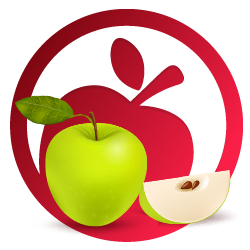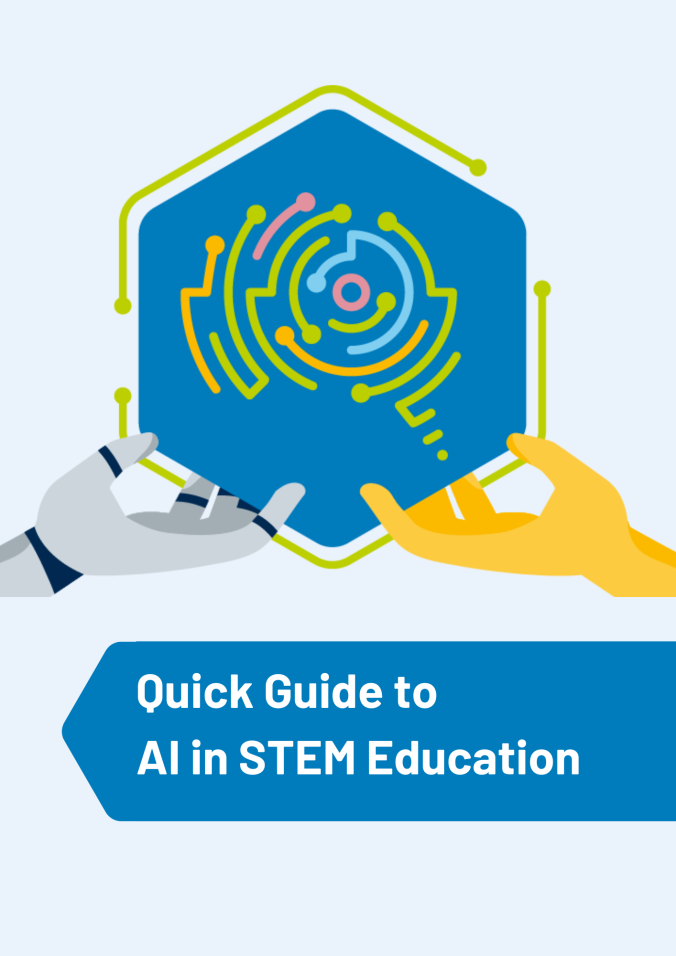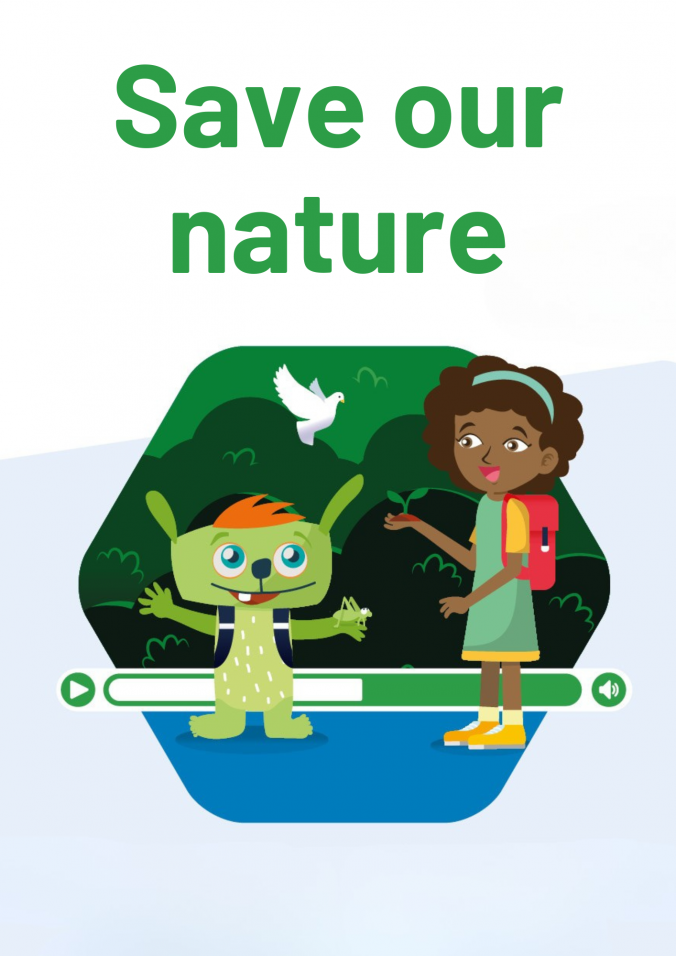Production of Apples
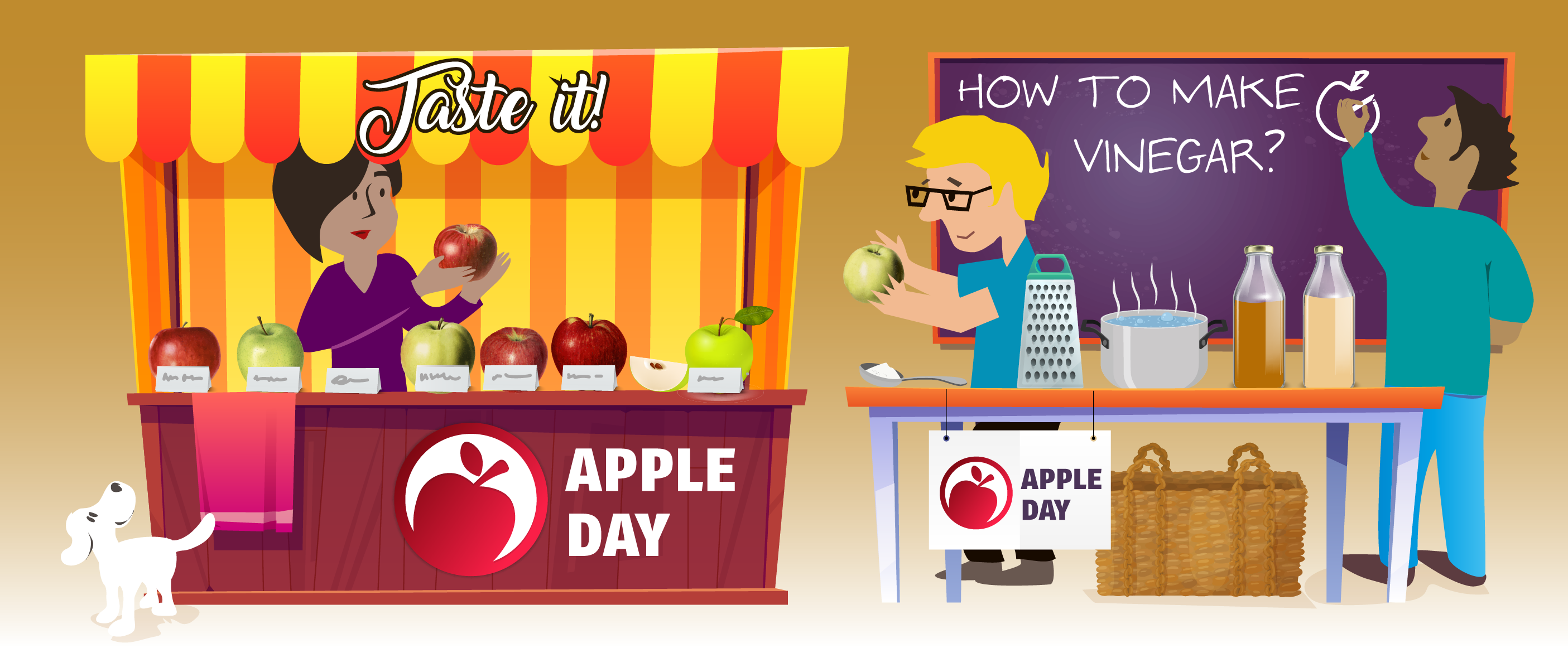
Overview
Overview
Keywords: apple varieties; imported/local; organic/nonorganic farming; biodiversity; food miles
Disciplines: biology, geography, home economics
Age level of the students: 7-17
Time frame: dependent on the activity
Partners: the local community, local apple growers, local farmers, local supermarket
![]()
![]()
Life cycle of an apple tree
In this lesson, students learn about the life cycle of an apple tree and link statements and photographs.
The activity is recommended for students of 7 years and older.
Start with a motivation
- What is the life cycle of an apple?
- Children hold an apple and discuss what the fruit is.
- Where are the seeds?
Task for students
- Children have a series of life cycle photographs and statements. Download the resource as word or as pdf file.
- Students work in groups. Can they put the photographs and statements into a life cycle? Please note that the statements and photos are not a 1:1 match – we want the children to discuss, not simply match.
- The life cycle does not have a start or an end.
- What is important about the life cycle?
Next challenge
- Collect the apple pips/seeds and start to grow them.
- Discuss that the seeds will take a long time to germinate.
- The seeds could be different to the apple that was produced due to pollination.
- Discuss that most apple trees are grafted and not grown from seed so that the apples are the same.
Buy local apples
In this lesson, students compare European apples and imported apples from New Zealand in April in terms of carbon dioxide footprint and the concept of food miles. They learn to read scientific data. In a role play, they also learn how to respond to people that are only interested in the price and do not care about the origin of food.
The activity is recommended for students of 11 years and older.
Start with a motivation
- Homework assignment: students are asked to do an enquiry in the local supermarket to work out where apples offered in the supermarket or local store originally come from.
- First do a brainstorming session with a world map, then point out on a map where the apples in the supermarket come from. Download the map as a word or a pdf file.
First task for students
- A worksheet with a figure and a table by M. Blanke; B. Burdick (2005) is handed out to the students. Download the worksheet as a word or a pdf file.
- Students analyse the table and compare the energy costs for both apples (local and imported).
- Students talk about their analysed results in class. Two aspects are interesting:
- Energy costs are high for transportation so buying local products is a good choice.
- Individual transportation by private car is energy consuming, so shopping by bike or foot is a better choice.
Second task for students
- The instructions for the role play are handed out to the students. Download the instructions as a word or a pdf file.
- Students create a role play on how to respond to people who do not care at all about the origin of food and are only interested in the cost.
- To be able to react to possibly unaware people, they are requested to collect possible arguments and facts, rank them in a priority order and then write down a conversation.
Comparison of apple production
This lesson has two parts, designed to raise the awareness for different cultivation methods and their impact on the surrounding environment.
In the first part, students learn about the difference between traditionally grown apples and commercially grown ones.
In the second part, students learn about the differences between organic growing and conventional methods. They design a flyer for consumers and apple farmers to inform them about the environmental benefits of organic farming or farming apples in the traditional way with meadow apple orchards.
The activity is recommended for students of 11 years and older.
Start with a motivation
- Two pictures are shown to the students, one picture displays a meadow orchard, the other picture shows a modern apple orchard.
- To get involved with the local community, visit an apple farm, if one is locally available.
First task for students
- Students are asked to read an introductory text about apple production, then they do a H5P assignment. You find both below.
Second task for students
- Discussion of the obtained information, pointing out possible reasons why modern-day apple farming is different from the historical cultivation on meadow orchards.
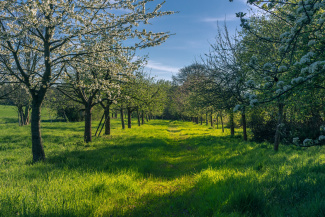
Organic meadow apple orchard
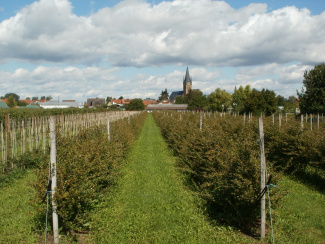
Modern conventional apple orchard
Commercial farming has changed dramatically over the past thirty years. Whereas in the past large-crowned, high-stemmed and therefore labor-intensive apple trees dominated, the majority of today's apple orchards are exclusively low trunk forms. Due to the low height, ten to twenty times as many trees can be planted in rows. The breeding objectives focus on a good yield, consistent quality yield, consistent quality in size, color, taste and resistance to diseases and pests. Only a few selected apple varieties are grown, and some are harvested by machine. Fully mechanized equipment is used for soil care, plant protection and fertilization. Hydraulically or pneumatically operated shears and saws are used for pruning.
The orchard meadow, also known regionally as fruit meadow or bongert, is the traditional form of fruit cultivation. For the market it is of little importance today. In the orchard meadows trees, mostly of different ages and of different fruit species and varieties, are scattered together. Within Germany orchards have declined by about 50 percent between 1965 and today.
This is mainly due to large-scale clearing operations in the 1970s. In the meantime, there has been a rethinking with regard to orchard cultivation: Scientific studies point to the enormous biodiversity and importance of orchards as habitats for rare animal and plant species. Already one apple tree can provide food and a habitat for more than 3,000 animal, insect and plant species.
Below you can find the same H5P assignment but as a quiz without the help of the images.
Start with a motivation
- After having examined historical and modern production, the focus is placed on different cultivation systems. For students this is limited to organic and conventional apple farming, integrated cultivation approaches are neglected.
- Students express a hypothesis, which form of apple production is the best in terms of ecology and economy.
First task for students
- In the event that apples are grown locally, it would be a great opportunity to do a survey of living creatures by sampling apple orchards with standardised methods and counting how many different species are found overall.
- The sampling is done on leaves and above ground. In the soil you can use a Berlese cone. Other possible methods for collecting species form the soil surface would be pitfall traps or Malaise traps to collect flying insects.
- Students receive a modified graph from a scientific article by Tamburini et al (2020) as a worksheet. Download it as a word or a pdf file. They are prompted to analyse the material. Results of the analysis are discussed with classmates, hypotheses are reviewed, and a summary/conclusion is written up.
Second task for students
- Students design a flyer to inform consumers and/or conventionally-producing apple famers about the environmental benefits of organic farming or farming apples in the traditional way with meadow apple orchards.
- The flyers may be distributed to the local community to get involved with the locals.
Authors of An Apple a Day Keeps the Climate Okay: Sarah Eames (GB), Renata Flander (SI), Dagmar Isheim (DE)
Links to forward to your students
M. Blanke; B. Burdick (2005): Food (miles) for Thought, ESPR12(3) 125-127 (Fig.1 and Table 2).
Tamburini et al. (2020), Agricultural diversification promotes multiple ecosystem services without compromising yield, Agri Sci. Adv. 2020;6 (Fig.1).
Share this page
